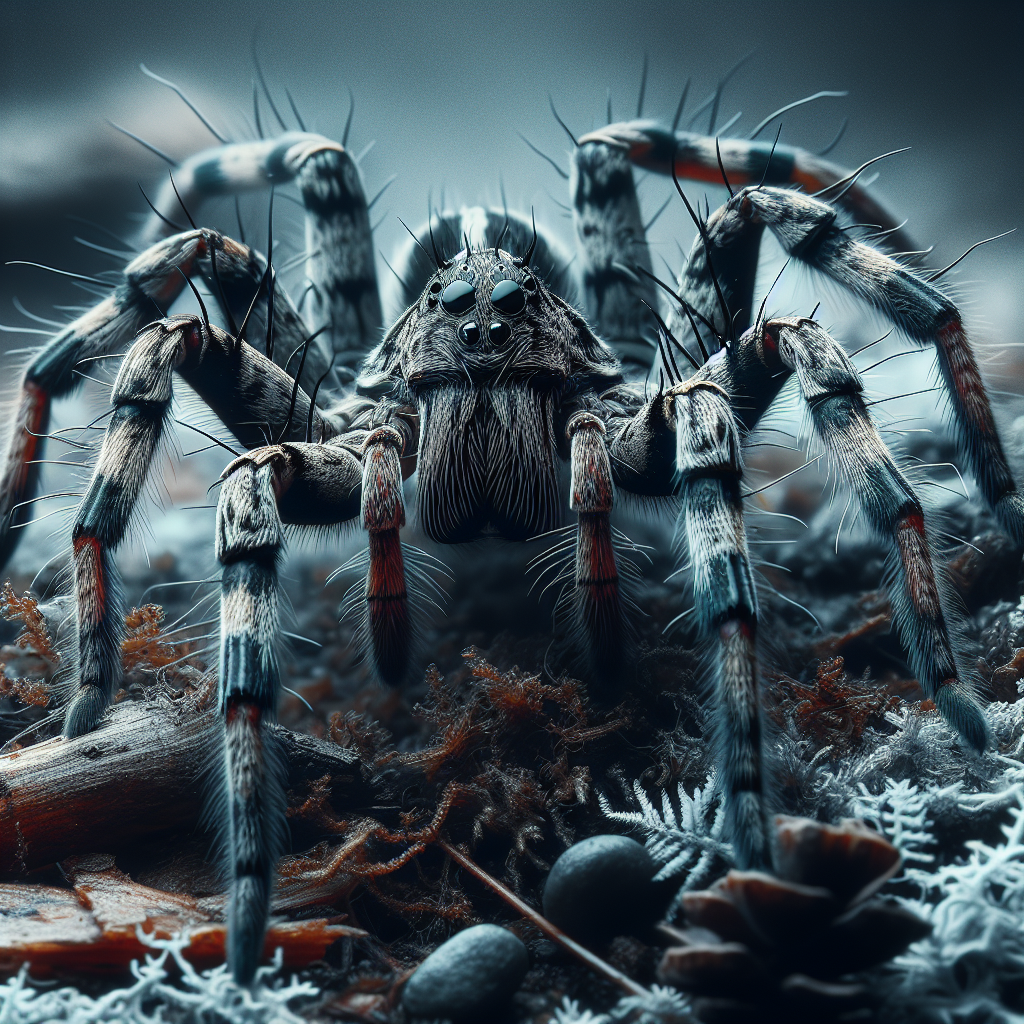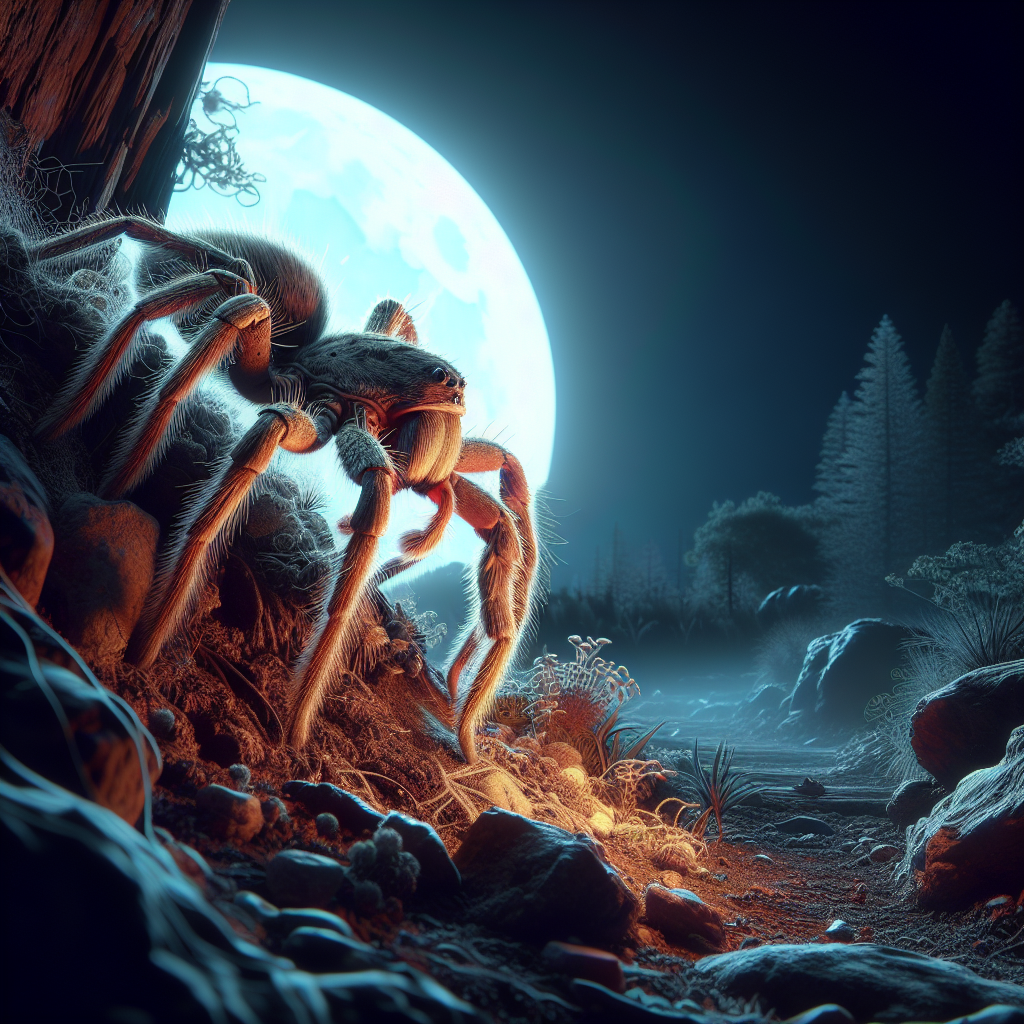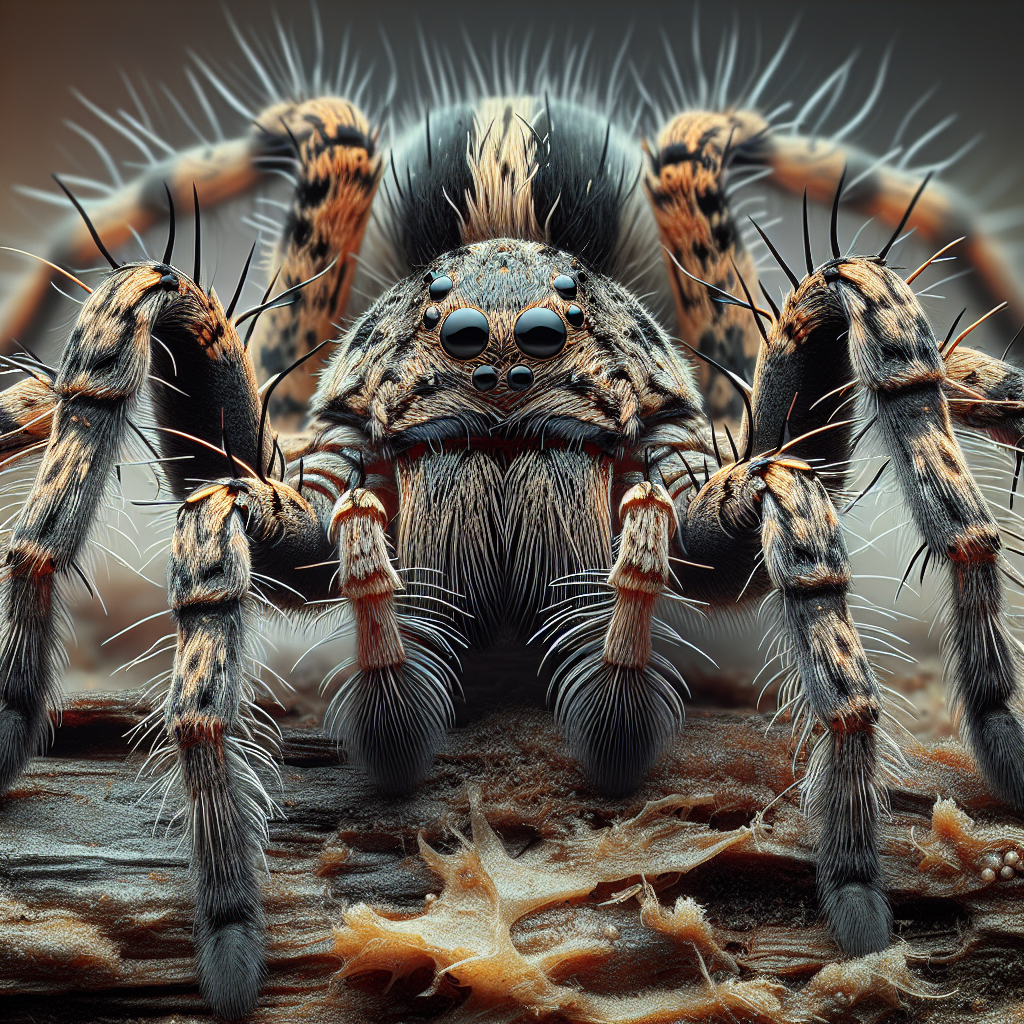Wolf Spiders in Indiana: Friend or Foe?
Introduction
Welcome to the wild world of wolf spiders in Indiana! If you’ve ever found yourself peeking under a rock or checking your porch at night, you might have encountered one of these eight-legged wonders. But are they here to help or hinder? Let’s dive into the fascinating realm of wolf spiders the misunderstood predators of our backyards.
First off, let’s get one thing straight: wolf spiders are not your average creepy crawlies. These arachnids are part of the Indiana wildlife scene and play a crucial role in our ecosystem. With their impressive hunting skills and unique behaviors, they might just be more beneficial than you think. But before you start rolling out the welcome mat, it’s essential to understand what makes them tick.
In this post, we’ll explore everything from wolf spider identification to their habitats and behaviors. We’ll also tackle some common misconceptions like whether or not they are dangerous. Spoiler alert: most wolf spiders in Indiana are harmless! So grab your magnifying glass and let’s unravel the mysteries of these intriguing creatures.

Understanding Wolf Spiders
Welcome to the wild world of wolf spiders, the furry little hunters that roam the forests and fields of Indiana! These arachnids are not your average eight-legged creatures; they are fascinating predators that play a crucial role in our ecosystem.
Wolf spiders belong to the family Lycosidae, which includes over 200 species in North America alone. They are known for their impressive hunting skills and distinctive appearance. Unlike many of their spider cousins, wolf spiders do not spin webs to catch prey. Instead, they rely on their speed and agility to chase down insects think of them as the Usain Bolt of the spider world!
Common Species in Indiana
In Indiana, you can find several species of wolf spiders. The most notable include:
- Brown Wolf Spider (Lycosidae spp.): Often found in grassy areas.
- Giant Wolf Spider (Hogna carolinensis): A true heavyweight, this species can grow up to 4 inches long!
- Common Wolf Spider (Lycosidae spp.): This adaptable spider can be spotted almost anywhere.
These species thrive in various habitats, from urban gardens to dense forests, showcasing their adaptability as part of Indiana’s diverse wildlife.
Did you know? Wolf spiders have excellent vision! With eight eyes arranged in three rows, they can spot movement from a distance, making them effective hunters both day and night.
Their diet primarily consists of insects like crickets and grasshoppers, but they won’t shy away from larger prey if given the chance. This makes them beneficial for controlling pest populations around your home.
So next time you spot a wolf spider scuttling across your yard or climbing up your wall, remember: these little guys are more than just creepy-crawlies they’re vital players in our ecosystem!
Wolf Spider Identification
Identifying a wolf spider in Indiana can be as thrilling as spotting a rare Pokémon! These eight-legged wonders have some distinctive traits that make them stand out from the crowd of common spiders in Indiana.
Physical Characteristics
Wolf spiders are robust and hairy, giving them a somewhat rugged appearance. Here are some key features to look for:
- Color: Typically brown or gray, with darker markings that resemble a camouflage pattern.
- Eyes: They have eight eyes arranged in three rows, which is a unique feature among many Indiana arachnids.
- Body Shape: Their bodies are generally oval-shaped and can be quite large, leading to confusion with other spiders.
Size Comparison with Other Spiders
The size of wolf spiders can vary significantly. Generally, they range from 0.5 to 2 inches long. To put that into perspective:
| Spider Type | Average Size |
|---|---|
| Wolf Spider | 0.5 – 2 inches |
| Brown Recluse | 0.5 – 1 inch |
| Tarantula (Indiana species) | 4 – 10 inches |
Differences Between Male and Female Wolf Spiders
If you’re trying to identify a wolf spider in Indiana, knowing the differences between males and females can be crucial:
- Males: Generally smaller with larger eyes and more pronounced coloration.
- Females: Often larger and bulkier; they carry their egg sacs attached to their spinnerets!

The next time you come across one of these fascinating creatures while exploring Indiana’s wildlife, you’ll be equipped with the knowledge to identify it confidently. So go ahead, channel your inner arachnologist!
Wolf Spider Habitat in Indiana
If you thought wolf spiders were just lurking in the shadows, think again! These eight-legged wonders have quite the diverse living arrangements here in Indiana. Let’s break down their habitats, shall we?
- Urban Habitats vs. Natural Habitats: Wolf spiders are true survivors, adapting to both urban and natural environments. In cities, you’ll find them hiding under porches, in basements, or even scuttling across your garden. In the wild, they prefer areas with plenty of ground cover think leaf litter, grasslands, and even forests.
- Where Do Wolf Spiders Live in Indiana? You might be surprised to learn that these arachnids are quite common throughout the state. From the bustling streets of Indianapolis to the serene trails of Hoosier National Forest, wolf spiders can be found almost anywhere! They thrive in open fields and wooded areas where they can hunt their prey without a hitch.
- Niche Within Indiana Ecosystems: Wolf spiders play a vital role in maintaining ecological balance. As predators, they help control populations of insects and other small arthropods. This makes them a crucial part of Indiana’s wildlife tapestry. And let’s not forget while they may look fierce with their hairy legs and large eyes, they’re essentially nature’s pest control agents!
Fun Fact: The brown wolf spider and giant wolf spider are two common species you might encounter while exploring Indiana’s diverse ecosystems!
So next time you spot a wolf spider scurrying about your yard or home, remember that these creatures are not just random intruders; they’re integral players in our local ecosystems! Embrace their presence they’re more friend than foe!
Behavior and Lifestyle of Wolf Spiders
When it comes to the wolf spider Indiana, understanding their behavior and lifestyle is key to appreciating these fascinating creatures. Unlike your average couch potato, wolf spiders are the ultimate night owls, with a penchant for prowling around after the sun goes down.
Nocturnal Habits
Wolf spiders are primarily nocturnal hunters. They thrive in the dark, using their excellent vision to spot prey. Imagine them as the ninjas of the spider world, stealthily moving through leaf litter and grass, ready to pounce on unsuspecting insects. Their eyes even have a reflective layer that helps them see better in low light talk about having an edge in the night!
Hunting and Diet of Wolf Spiders
These arachnids are not your typical web-weavers; instead, they rely on speed and agility to catch their meals. Their diet mainly consists of:
- Insects like crickets and flies
- Other small arthropods
- Occasionally, smaller spiders (yes, they play the cannibal card too!)
This makes them beneficial for controlling pest populations around your home. So while they might give you a fright when you spot one scuttling across your floor, remember they’re just doing their part in maintaining balance with other common spiders in Indiana.
Seasonal Activity Patterns in Indiana
The activity of wolf spiders varies with the seasons. During warmer months, you’ll find them more active as they hunt for food and mate. However, as temperatures drop in fall and winter, these little hunters tend to retreat into sheltered spots like:
- Under rocks or logs
- Corners of basements or garages
- Inside piles of leaves or debris outdoors
Their lifespan can also vary depending on environmental conditions and predation risks. In general, wolf spiders live about 1-2 years but can survive longer under optimal conditions.

So next time you spot a wolf spider darting across your path in Indiana, remember this: they’re not here to harm you; they’re just living their best life as nature’s pest control agents!
Wolf Spider Bite Symptoms and Safety Concerns
So, are wolf spiders dangerous in Indiana? The short answer is no. While these eight-legged critters may look like they mean business, they are generally harmless to humans. However, it’s always good to be informed about wolf spider bite symptoms just in case you find yourself on the receiving end of a bite.
Bite Symptoms and First Aid Measures
If you happen to get bitten by a wolf spider, you might experience the following symptoms:
- Localized pain or swelling at the bite site
- Redness or itching around the area
- Occasional mild nausea or headache
These symptoms can feel a bit like a mosquito bite but with a little more flair. In most cases, a wolf spider bite will not require medical attention. However, if you experience severe symptoms such as difficulty breathing or intense pain, it’s best to seek medical help immediately.
- Wash the bite area with soap and water.
- Apply a cool compress to reduce swelling.
- Take over-the-counter pain relief if necessary.
Comparison with Poisonous Spiders in Indiana
Now let’s talk about how wolf spiders stack up against their more infamous cousins like the brown recluse and tarantula. Here’s a quick comparison:
| Spider Type | Pain Level | Treatment Required? |
|---|---|---|
| Wolf Spider | Mild | No (usually) |
| Brown Recluse | Severe | Yes (medical attention needed) |
| Tarantula (Indiana) | Mild to Moderate | No (usually) |
The Lifespan and Natural Predators of Wolf Spiders in Indiana
When it comes to the lifespan of wolf spiders in Indiana, these eight-legged marvels have a pretty impressive run. In the wild, you can expect a wolf spider to live for about 1 to 3 years. However, in captivity where they are free from the usual threats they can stretch that lifespan up to 5 years or more. It’s like the difference between living on the edge and enjoying a cozy retirement!
Now, let’s talk about their natural predators. While wolf spiders are fierce hunters themselves, they aren’t at the top of the food chain. They face threats from various creatures, including:
- Birds: Many birds enjoy a protein-packed snack of wolf spider.
- Reptiles: Small lizards and snakes find them quite delectable.
- Mammals: Some small mammals will munch on these spiders if they get the chance.
- Other Spiders: Believe it or not, larger spiders might see a wolf spider as their next meal!
This dynamic is crucial for maintaining balance in the ecosystem. Wolf spiders play an important role in controlling insect populations, making them valuable allies in the fight against pests. In turn, their predators help keep their numbers in check, creating a fascinating dance of survival.
Key Takeaway: Understanding the lifespan and natural predators of wolf spiders helps us appreciate their role in Indiana’s ecosystems. They may not be cuddly, but they’re essential players!
Misinformation About Wolf Spiders: Myths vs. Facts
When it comes to the wolf spider in Indiana, misinformation can run rampant. Let’s clear the air and separate fact from fiction, shall we?
Myth 1: Wolf Spiders Are Dangerous
Many people believe that all spiders are out to get them, and wolf spiders are no exception. However, the truth is that while they can bite if threatened, wolf spiders are not dangerous to humans. Their bites may cause mild irritation but are generally harmless.
Myth 2: They Are Poisonous
Another common misconception is that wolf spiders possess venom potent enough to harm humans like some of their more notorious cousins, such as the brown recluse or black widow. In reality, wolf spider bites typically result in symptoms like:
- Redness
- Swelling
- Pain at the site of the bite
This is a far cry from the severe effects of bites from truly poisonous spiders.
Myth 3: All Wolf Spiders Are Giant
Sure, you might come across a giant wolf spider in Indiana that makes you do a double-take especially if it’s lurking near your garden. But did you know that not all wolf spiders are large? In fact, sizes can vary significantly among species! The average size ranges from about 0.5 to 2 inches long.
Fact: They Have Unique Hunting Skills
Unlike many other common spiders in Indiana that spin webs to catch prey, wolf spiders prefer a more active approach. They are excellent hunters with remarkable speed and agility, which makes them fascinating creatures to observe. Their diet mainly consists of insects and other small arthropods.
Fact: Seasonal Activity Matters
If you’re wondering when you might encounter these eight-legged friends, keep an eye out during warmer months! Wolf spider activity peaks in spring and summer when they emerge from hiding spots for mating and hunting.

A Final Thought on Misinformation
The next time someone mentions a terrifying run-in with a wolf spider in Indiana, remember these facts! By understanding their behavior and role within our ecosystems, we can appreciate these fascinating creatures instead of fearing them.
How to Manage Wolf Spiders at Home in Indiana?
So, you’ve spotted a wolf spider in Indiana, and you’re wondering what to do next. Fear not! Managing these eight-legged housemates doesn’t have to be a horror show. Here are some practical tips to keep your home spider-free while still respecting their role in the ecosystem.
1. Identify and Understand Their Behavior
First things first, knowing what you’re dealing with can make all the difference. Wolf spiders are typically brown or gray, with a body length of about 1-2 inches. They are fast runners and excellent hunters, preying on insects like crickets and cockroaches. Understanding their behavior can help you manage them effectively:
- Nocturnal habits: These guys love the night! If you notice them more often after sunset, it’s just their nature.
- Hiding spots: Look for them in dark corners, under furniture, or even in your garage places where they can set up camp unnoticed.
2. Keep Your Space Clean
A clean home is less inviting for wolf spiders and other pests. Regularly vacuuming and dusting can help eliminate hiding spots:
- Declutter: Remove unnecessary items from floors and corners.
- Seal cracks: Check windows and doors for gaps where spiders might sneak in.
- Yard maintenance: Trim back vegetation near your home; it reduces their outdoor habitat.
3. Use Natural Deterrents
If you prefer a more eco-friendly approach, consider using natural repellents. Here are some options that won’t harm our arachnid friends too much but will encourage them to find new digs:
- Peppermint oil: Mix with water in a spray bottle and spritz around entry points.
- Citrus peels: Spiders dislike the smell of citrus; place peels near windows or doorways.
4. Consider Professional Help
If you’re still feeling overwhelmed by your wolf spider population, it might be time to call in the pros! A local pest control service can provide tailored solutions that respect both your home and the environment.
Takeaway: Wolf spiders play an important role in controlling pest populations but can be managed effectively through cleanliness, natural deterrents, and professional assistance when needed!
Conclusion: The Role of Wolf Spiders in Our Ecosystem
When it comes to understanding the wolf spider in Indiana, it’s essential to appreciate their vital role in our ecosystems. These eight-legged wonders are not just lurking shadows in the corners of your basement; they are crucial players in maintaining the balance of nature!
First off, let’s talk about their diet. Wolf spiders are voracious hunters, primarily feasting on insects like crickets, beetles, and even other spiders. By keeping these populations in check, wolf spiders help reduce pest outbreaks that could otherwise wreak havoc on gardens and crops. Imagine them as nature’s pest control agents no chemicals required!
Moreover, wolf spiders have a fascinating relationship with their habitat. They thrive both in urban areas and natural settings, showcasing remarkable adaptability. Whether they’re scuttling across your garden or hiding under a pile of leaves in the woods, these arachnids contribute to the biodiversity of Indiana’s ecosystems.
Now, let’s address the elephant (or should we say spider?) in the room: safety concerns. While some might fear a run-in with a wolf spider due to misconceptions about their bite symptoms or potential danger, it’s important to note that they are generally harmless to humans. In fact, most bites result only in mild irritation definitely not worth panicking over! This makes them one of the many harmless spiders in Indiana.
The Natural Predators
Wolf spiders also play an essential role as prey themselves! They fall victim to various predators like birds and larger insects, thus contributing to the food web dynamics. This relationship highlights their importance not just as hunters but also as a food source for other wildlife.
A Lifespan of Impact
The lifespan of a wolf spider can vary significantly based on environmental factors typically ranging from 1-2 years. During this time, they engage actively in hunting and reproduction, continuing their legacy within Indiana’s diverse wildlife tapestry.
In conclusion, while you might be tempted to view wolf spiders as foes scuttling around your home, remember that they are more friend than foe when it comes to our ecosystem. They help control pest populations while serving as prey for other wildlife truly an unsung hero! So next time you spot a wolf spider in Indiana, consider giving it a respectful nod instead of reaching for that shoe.
If you’re eager to learn more about how these fascinating creatures contribute to our environment or how best to coexist with them peacefully at home, stay tuned for more insights!

